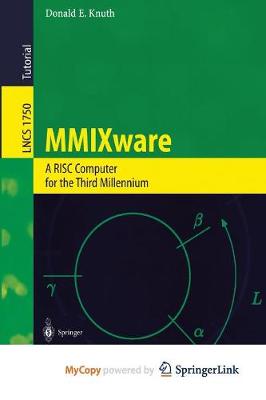Lecture Notes in Computer Science
2 primary works
Book 606
to make a comprehensive study of fundamental operations that
are used in many different algorithms. This monograph
attempts such an investigation in the case of two basic
predicates: the counterclockwise relation pqr, which states
that the circle through points (p, q, r) is traversed
counterclockwise when we encounter the points in cyclic
order p, q, r, p,...; and the incircle relation pqrs, which
states that s lies inside that circle if pqr is true, or
outside that circle if pqr is false. The author, Donald
Knuth, is one of the greatest computer scientists of our
time. A few years ago, he and some of his students were
looking at amap that pinpointed the locations of about 100
cities. They asked, "Which ofthese cities are neighbors of
each other?" They knew intuitively that some pairs of cities
were neighbors and some were not; they wanted to find a
formal mathematical characterization that would match their
intuition.This monograph is the result.
Book 1750
MMIX is a RISC computer designed by Don Knuth to illustrate machine-level aspects of programming. In the author's book series "The Art of Computer Programming", MMIX replaces the 1960s-style machine MIX. A particular goal in the design of MMIX was to keep its machine language simple, elegant, and easy to learn. At the same time, all of the complexities needed to achieve high performance in practice are taken into account.
This book constitutes a collection of programs written in CWEB that make MMIX a virtual reality. Among other utilities, an assembler converting MMIX symbolic files to MMIX objects and two simulators executing the programs in given object files are provided. The latest version of all programs can be downloaded from MMIX's home page. The book provides a complete documentation of the MMIX computer and its assembly language. It also presents mini-indexes, which make the programs much easier to understand.
A corrected reprint of the book has been published in August 2014, replacing the version of 1999.

